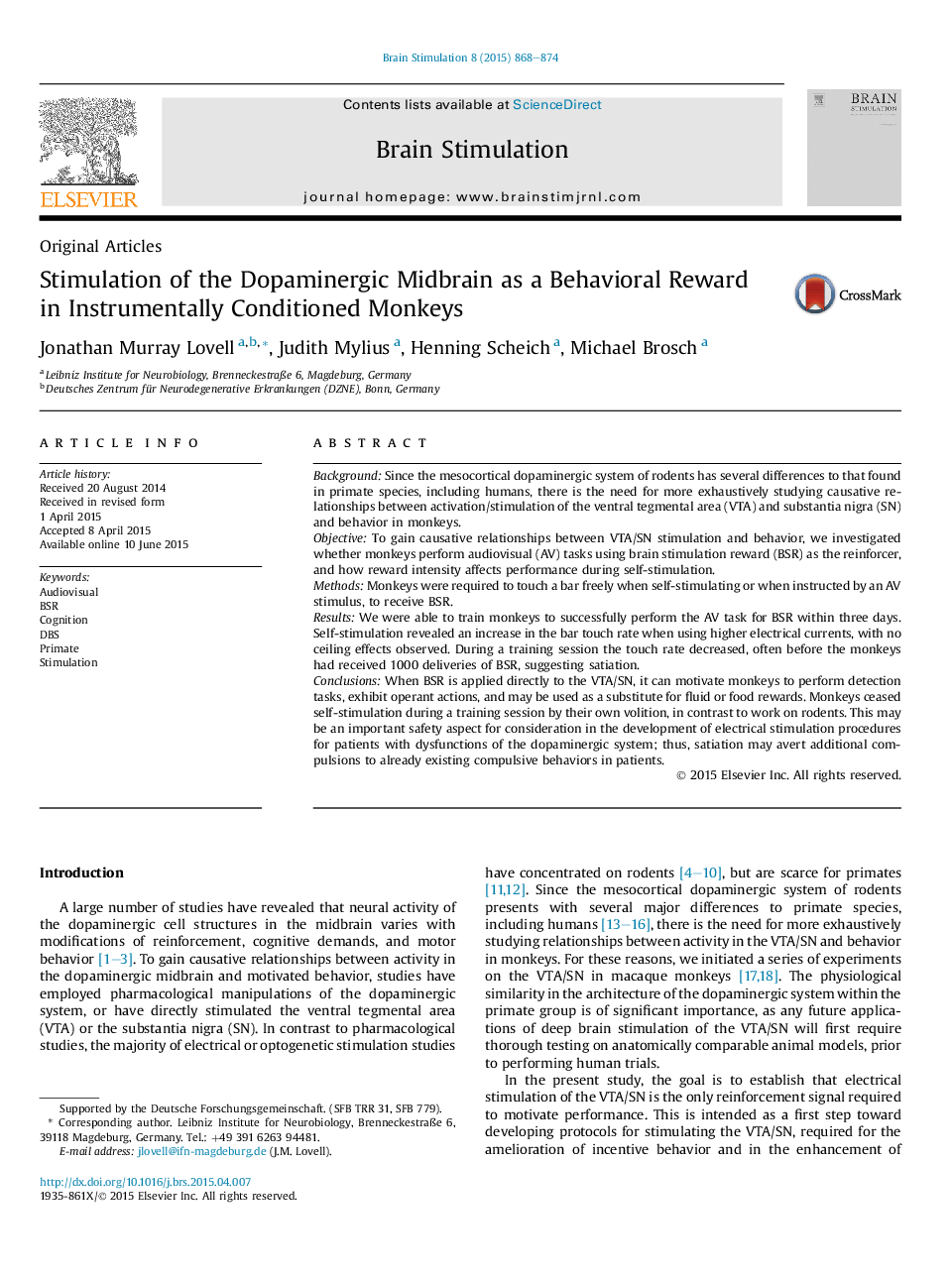| کد مقاله | کد نشریه | سال انتشار | مقاله انگلیسی | نسخه تمام متن |
|---|---|---|---|---|
| 6005682 | 1184669 | 2015 | 7 صفحه PDF | دانلود رایگان |

- Here we show that monkeys perform tasks using Brain Stimulation Reward (BSR).
- We were able to train monkeys to successfully perform an AV task within three days.
- It may be possible to substitute fluid or food rewards with BSR to the VTA.
- Declines in reward-seeking behavior after repeated BSR suggests it is not addictive.
BackgroundSince the mesocortical dopaminergic system of rodents has several differences to that found in primate species, including humans, there is the need for more exhaustively studying causative relationships between activation/stimulation of the ventral tegmental area (VTA) and substantia nigra (SN) and behavior in monkeys.ObjectiveTo gain causative relationships between VTA/SN stimulation and behavior, we investigated whether monkeys perform audiovisual (AV) tasks using brain stimulation reward (BSR) as the reinforcer, and how reward intensity affects performance during self-stimulation.MethodsMonkeys were required to touch a bar freely when self-stimulating or when instructed by an AV stimulus, to receive BSR.ResultsWe were able to train monkeys to successfully perform the AV task for BSR within three days. Self-stimulation revealed an increase in the bar touch rate when using higher electrical currents, with no ceiling effects observed. During a training session the touch rate decreased, often before the monkeys had received 1000 deliveries of BSR, suggesting satiation.ConclusionsWhen BSR is applied directly to the VTA/SN, it can motivate monkeys to perform detection tasks, exhibit operant actions, and may be used as a substitute for fluid or food rewards. Monkeys ceased self-stimulation during a training session by their own volition, in contrast to work on rodents. This may be an important safety aspect for consideration in the development of electrical stimulation procedures for patients with dysfunctions of the dopaminergic system; thus, satiation may avert additional compulsions to already existing compulsive behaviors in patients.
Journal: Brain Stimulation - Volume 8, Issue 5, SeptemberâOctober 2015, Pages 868-874